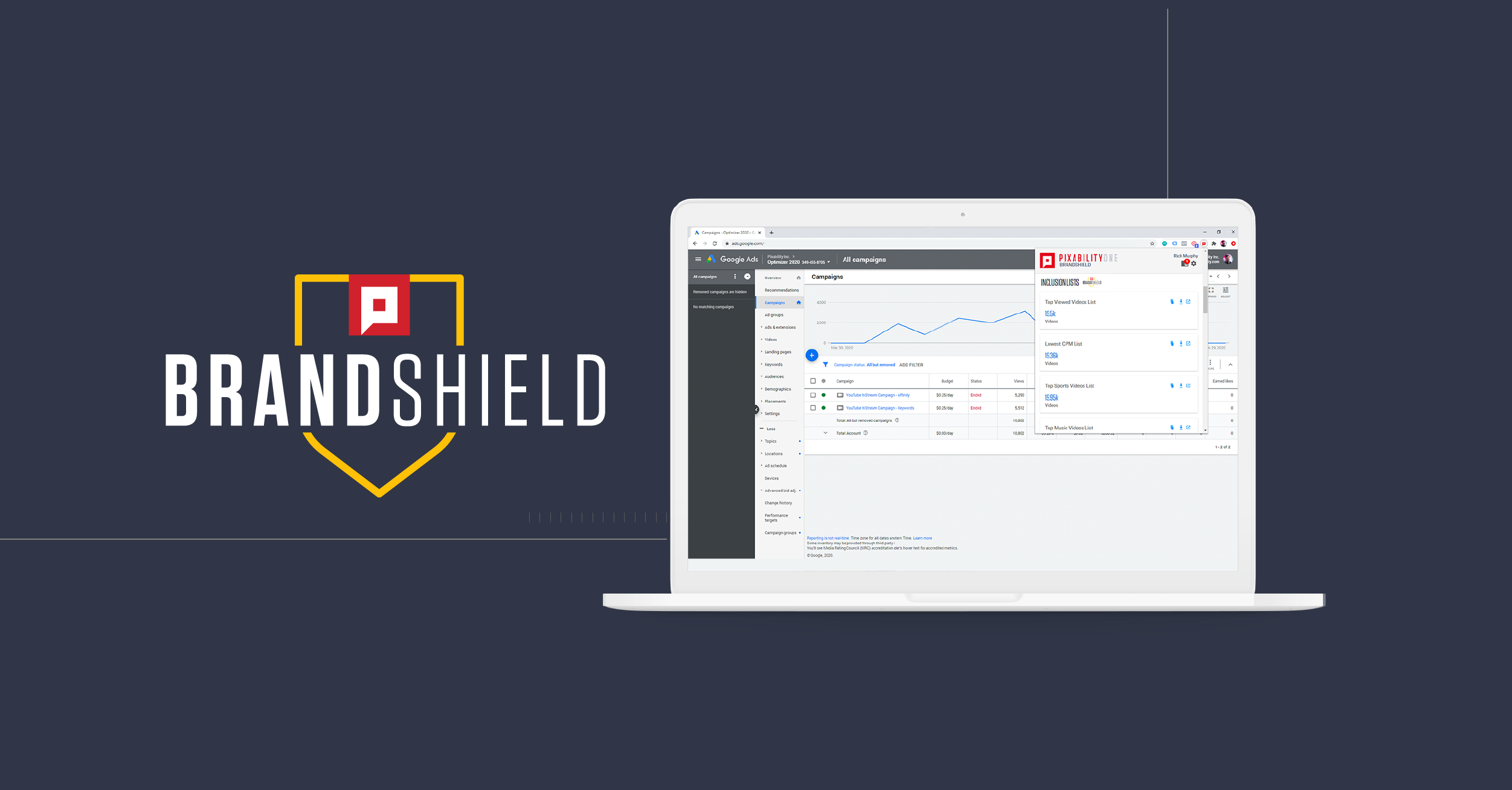
Announcing BrandShield — a product more than 10 years in the making
December 6, 2023I have worked at Pixability for over 7 years, and this week was one of the most impactful I’ve seen here.
This week, we launched BrandShield. It’s a complete suite of self-service brand suitability products unlike anything else on the market. This is the first time we are able to make our brand suitability technology fully available for everyone in the market — not just our managed service customers.
My team has worked really hard to evolve how advertisers think and build strategies around brand suitability on YouTube. We spent months getting feedback on what advertisers really want out of a brand suitability product, and I believe that now we have built something special.
Here’s how BrandShield is making a big impact:
- We’re Supporting Good Actors
BrandShield is built to support people creating content in good faith on YouTube, and to block bad actors. Our approach proactively supports Black, POC, LGBTQ+, and other communities that may have actually been blocked from receiving ad revenue by major advertisers due to clumsy brand suitability strategies. We also have a one-strike, zero-tolerance policy for unsavory YouTube channels to get added to our block list. - We’re Helping Eliminate Waste
Increased brand suitability actually decreases wasted impressions. With a customized solution for each client, we can ensure ads are being watched by the right consumers — and advertisers impressions are not wasted on, for example, nursery rhyme content. - We’re All About Performance
Controlling brand suitability means we can now focus our conversations with large advertisers on selling their products, and not worrying about brand suitability.
BrandShield has been a work in progress for almost 10 years. Yeah, you read that right — 10 years! But good things take time. We filed a patent for brand suitability before I even started, way back in 2012.
These are not easy problems to solve (if someone tells you otherwise, they are not solving it!). The scale at which YouTube videos are uploaded is massive — in fact, there are over 500 hours of fresh video content uploaded every minute to the platform. It’s a challenge that is impossible for humans to solve alone. That’s why we poured so much time, hard work, love, and data science into this awesome product.
While many try to solve brand suitability challenges with keyword blocking alone, this approach actually creates other serious issues. For example, keyword blocking leads to decreased monetization for creators in certain communities, like Black YouTube creators when they are talking about the Black Lives Matter movement, or LGBTQ+ creators getting blocked for their coming out stories. We should be supporting these creators and their stories, not blocking them from receiving ad revenue.
Keyword blocking is also inefficient. For example, the typical keyword list blocks 3,000 videos on the NBA’s channel alone — at a cost of 600M impressions on quality content. It’s because of keywords and titles that include words like “shot” and “shooting” — and the result is smaller scale, missed impressions, and higher prices for advertisers.
We knew we had to take a more sophisticated approach. So, we collected one of the largest training data sets of YouTube videos and channels in the industry, and trained the best machine learning algorithms to categorize YouTube content. We created an app with a Tinder-esque workflow to grade, categorize, and review channels and videos. We tested, learned, and did more testing.
The result is BrandShield. Through a combination of video and image labeling, speech recognition, keyword natural language processing, sentiment analysis, quality analysis, and topic analysis on every single video, BrandShield can determine if it is brand suitable.
This combination of different data analysis and data science techniques results in the most brand suitable and highest performing YouTube campaigns in the industry.
With the launch of BrandShield, we’re now able to offer:
- Pre-built, downloadable, and customizable inclusion and exclusion lists.
- Streamlined dashboards for insights on list performance and channel audiences, as well as content previews.
- Redefined acceptable channels — we have a one strike policy for YouTube channels. If there is one bad video on a channel, or bad news surrounding the channel owner, we remove that channel and add it to our channel block list.
- Redefined acceptable categories on YouTube as defined by the IAB, 4A’s and supported by GARM to help push industry standards forward. We are very thankful for the industry leaders who have stepped up to create common definitions of safety and suitability.
We believe this is a huge step forward in our industry. We hope BrandShield can help advertisers sell more of their products and services and maintain their brand reputation online.
Want to learn more about how BrandShield can help you protect your brand, while driving effective, efficient, and scalable campaigns on YouTube? Let’s connect to schedule a demo.